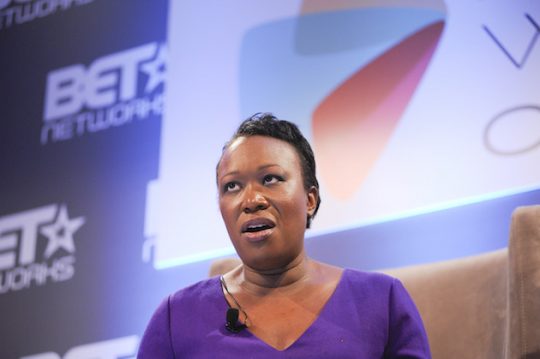A Saturday New York Times profile of MSNBC host Joy Reid unintentionally demonstrated why the "Heroine of the Resistance" is kind of bad at this whole "journalism" thing.
The Times piece actually provides a pretty accurate and fair profile of Reid as a pundit: unabashedly liberal, strongly anti-Trump, and often inaccurate at the cost of smearing innocent men as racists. It would have been reeeeally easy for the Times to just do a puff piece of a liberal darling, and it deserves credit for also highlighting Reid's habit of getting things laughably wrong on Twitter.
But what caught my eye was the two stories cited in the awkward period when Reid was between opinion shows and was instead hired by MSNBC as a hard news reporter:
Many of her stories focused on race in America. In 2015, she went to Mississippi to investigate the death of a man found hanging from a tree, suspended by a bedsheet, which some people said could have been a lynching. "I literally have never had an experience where I felt almost like I was waking through a haunting," she said. "You could just feel the ghosts of Mississippi past everywhere you went."
A few months later, Ms. Reid investigated why black churches were being burned down in Southern states, visiting a church in South Carolina that was across the street from a dark forest. "You could almost transport yourself back to the 19th century and see the enslaved people running, you know?" she said. "Everything about it had this omnipresent sort of pallor that I think America doesn’t want to deal with."
Yet both of the stories pursued by Reid and cited by the Times as dogged, on-the-ground reporting turned out to be more-or-less bogus.
In 2015, Otis Byrd was indeed found hanging from a tree by a bedsheet several yards from his home in Port Gibson, Mississippi. The local NAACP and his family petitioned the federal government to investigate the hanging as a hate crime given the manner of the death and his conviction for the murder of a white woman years earlier.
Reid was one of the reporters on the scene interviewing the family and a local sheriff, who told her it was too early in the investigation to call it a murder or a suicide. Two days after Reid's report, USA Today reported that the preliminary autopsy pointed to suicide, a finding endorsed by the Justice Department two months later and reluctantly accepted by Byrd's family.
Later that year, the Southern Poverty Law Center ran a blog calling attention to the fact that "in what may not be a coincidence," several predominantly African-Americans churches had caught fire the previous week. The story went viral, prompting headlines such as "Black Churches Are Burning Again in America," from the Atlantic and "Why are black churches burning?" from Reid.
More sober analysis by the Washington Post found that "There probably isn’t an unusual rash of arsons at black churches." Blogger Phillip Bump noted that church fires are surprisingly common in the United States, and that more white churches caught fire in the same time frame. What's more, only two of the six fires that supposedly fit a "pattern" were being investigated as possible arson, and there was no evidence either was a hate crime.
"It seems that the reported trend is more a function of our habit of seeking out patterns than any abnormal targeting of black churches," he wrote.
There's nothing wrong with reporters investigating unproven allegations of hate crimes, or investigating a story that later turned out to be baseless. But in both instances, the only evidence that the stories warranted instigation in the first place was that "some people," as the Times put it, decided that it was a hate crime. But of course, "some people" believe that holograms flew into the World Trade Center, that Hillary Clinton ran a pedophilia ring, and that Barack Obama was born in Kenya.
Likewise, the quotes that Reid provided are particularly enlightening as to her motives. When investigating the Byrd hanging, she "could just feel the ghosts of Mississippi past." When investigating the church fires, "you could almost transport yourself back to the 19th century and see the enslaved people running." Never ye mind the lack of evidence on the ground to actually back up accusations of hate crime, she just felt it, dagnabbit.
By her own admission, Reid had already decided what the real story was, and in a happy coincidence it just happened to confirm her preexisting biases. Never mind that of the 300,000 churches in the United States, you can expect five to be targeted for arson on a weekly basis for a host of reasons. Or that there are over a hundred suicides a day in the United States, but there hasn't been a lynching since 1981.
When you hear hooves, the old adage goes, think of horses and not zebras. Ace reporter Joy Reid heard those hooves clopping several times, and always thought of zebras. Racist, racist zebras, decked out in full Klan regalia.
Again, I doubt the Times intentionally picked the two stories that best exemplified why Joy Reid was a terrible choice for a position in hard news reporting. But on the off-chance they did want to prove that Reid is at often the forefront of baseless, racially-tinged fear-mongering, they did an excellent job.
